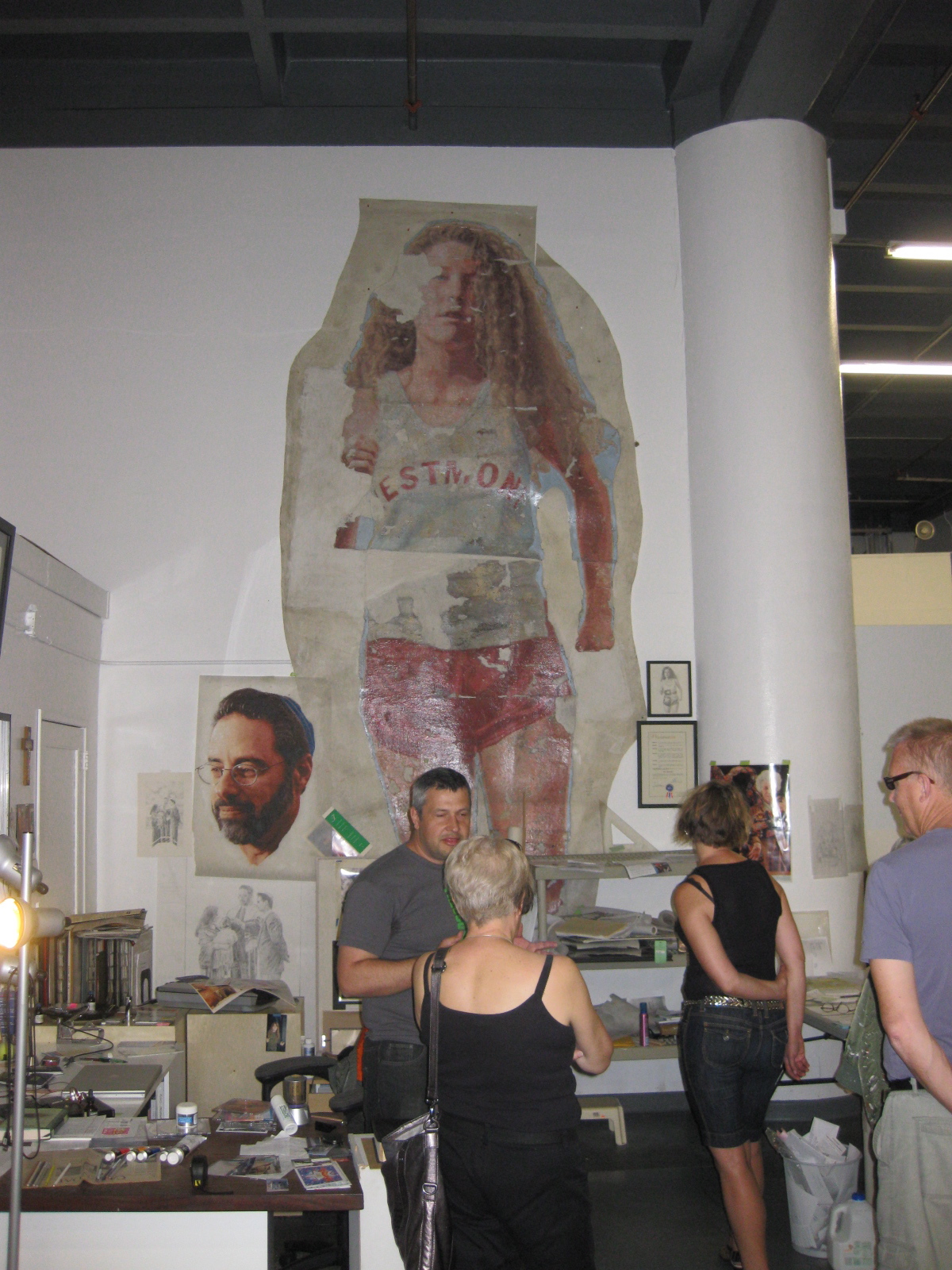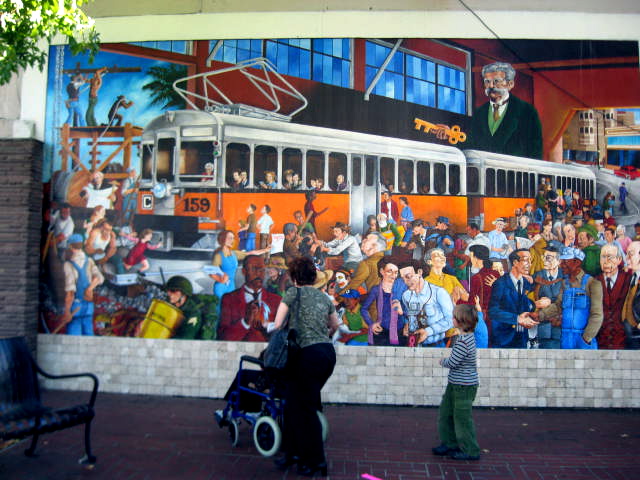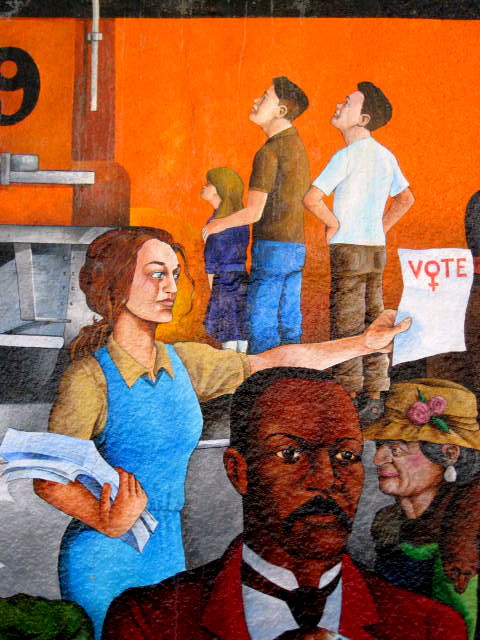 Mural work in progress, L.A.
Mural work in progress, L.A.
Many people think that fresco -painting belongs to the past, but artist Ilia Anossov, who runs the Fresco School in Los Angeles, holds an opposite opinion. According to him fresco is a basic thing in art, not something that mattered only in Renaissance.

I had an opportunity to visit the L.A. based Fresco School in early November 2010. Fresco School that was established in 1997 is the only art school that offers ongoing fresco curriculum throughout the calendar year. Hundreds of students from US, Canada and Europe have attended the workshops of the school. Mr. Anossov who got a classical art education in Moscow, is a true master of the technique and an enthusiastic spokesman of the relevance of fresco painting in present day world.
As a matter of fact the fresco painting is older than Renaissance, tells Mr. Anossov, its history goes back thousands of years, even to the pre-historical time when the first artists painted images on the walls of caves. Ilia Annosov points that much of our knowledge about the early cultures is based to the wall paintings, which are in many cases the only things that have remained from them. We know something about Pompeii, the Pompeian people and their way of life, for instance, because they painted frescoes on their walls.
The speciality of fresco technique lies in the natural materials, which give the paintings such a long lifetime. The fresco technique does not use any artificial or toxic chemicals – all the materials come directly from nature and they are still the same as they have always been. Other mediums, like painting in oil have a relatively short lifetime. Examples of oil painting can be traced back only several hundred years, says Mr. Anossov. Reproductions of photographs have even shorter lifetime.
Representation and truthfulness to nature have so far been taken as self evident in fresco art. In his recent works Ilia Anossov has however made experiments with non-representative fresco – paintings. In his new works he approaches minimalism, which allows the fine texture of the materials and color to come forth.

The most characteristic present day frescoes combine photographic image and fresco technique. Kent Twitchell, a well-known L. A. muralist has become famous of this method. Mr. Twitchell, who also teaches in the Fresco School, has accomplished several public fresco projects in Los Angeles. Among them are mural paintings of the L.A. marathon, and several large-scale portraits of Hollywood celebrities. Freeway–Lady in Hollywood is one his best-know images. Kent Twitchell has honored his fellow artists in public portraits, too. A group portrait of the L.A. Chamber Orchestra is one of his recent projects.
What makes the Fresco School murals special and very American, is that they celebrate the individual. So, even though mural painting is public art, in Southern California it does not convey political or educational ideas. In this the Fresco School art separates from the mural painting practiced by famous Mexican muralist Diego Rivera, for instance. Rivera’s mural paintings, which were made in the 30’s and 40’s, often carried out educational and political aims.
In Northern California things are different than in the South. In Oakland downtown there are several public mural artworks, which tell about the local history, common people and their ways of living. These paintings follow the tradition of Rivera. In Piedmont Avenue one can find some recent wall paintings by a local artist Rocky Baird.

These large-scale paintings, which remind of the realistic style of the well-known San Francisco Coit- tower murals from the 30’s, do not use the fresco technique, however. In one of them, The Key System from 2004 Rocky Baird has depicted the recent history of Oakland. The central theme of the painting is the idea, or maybe a dream of public transportation in Bay Area, The Key system, which was never fully lived out.
Only pedestrians walking on the plaza can reach the painting, rich of detailed narrative motives. The drivers passing by do not see it. Mr. Baird’s painting thus celebrates the neighborhood where walking and slow life, like sitting in cafeterias is still possible.
Link: www.frescoschool.org
